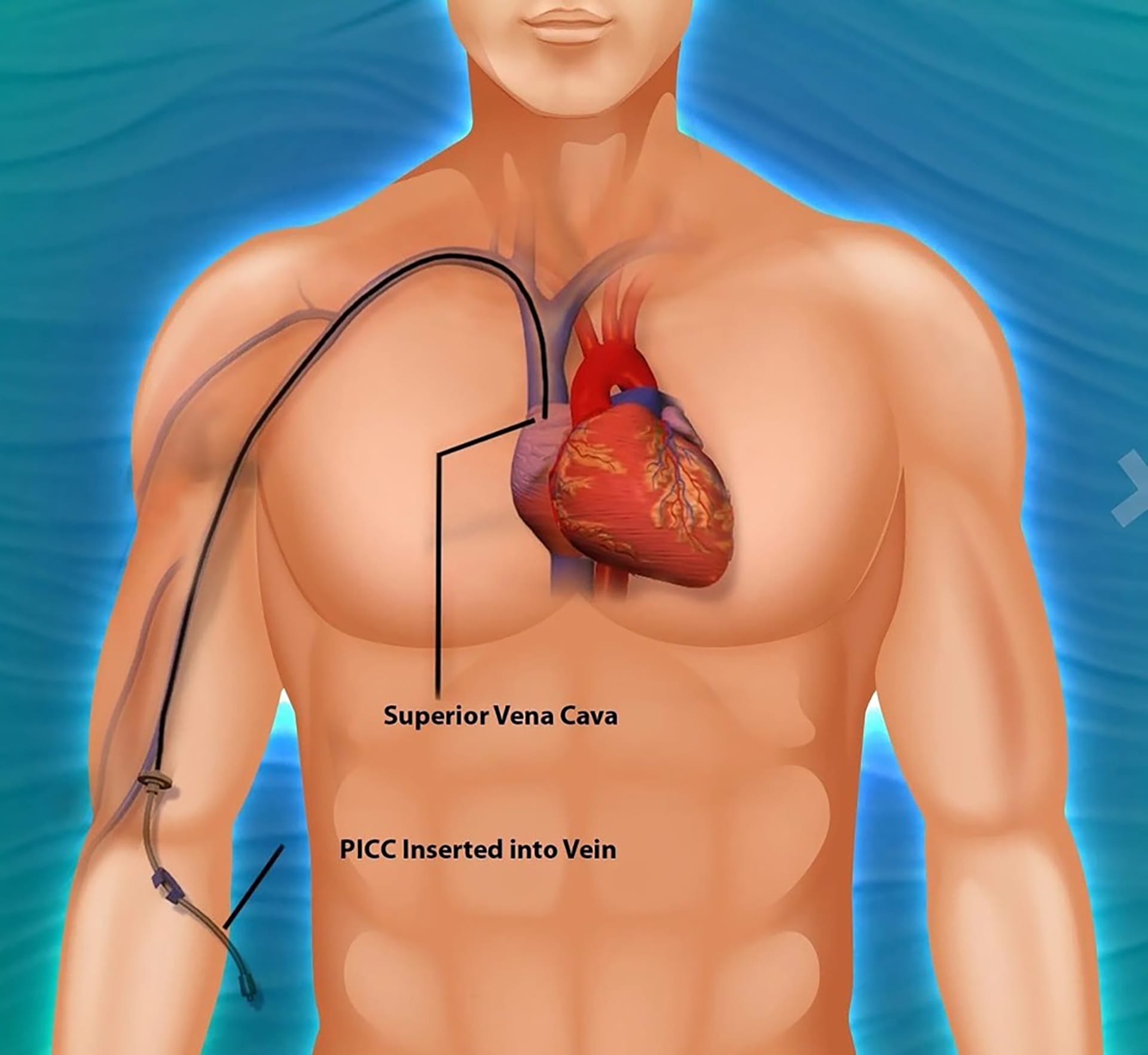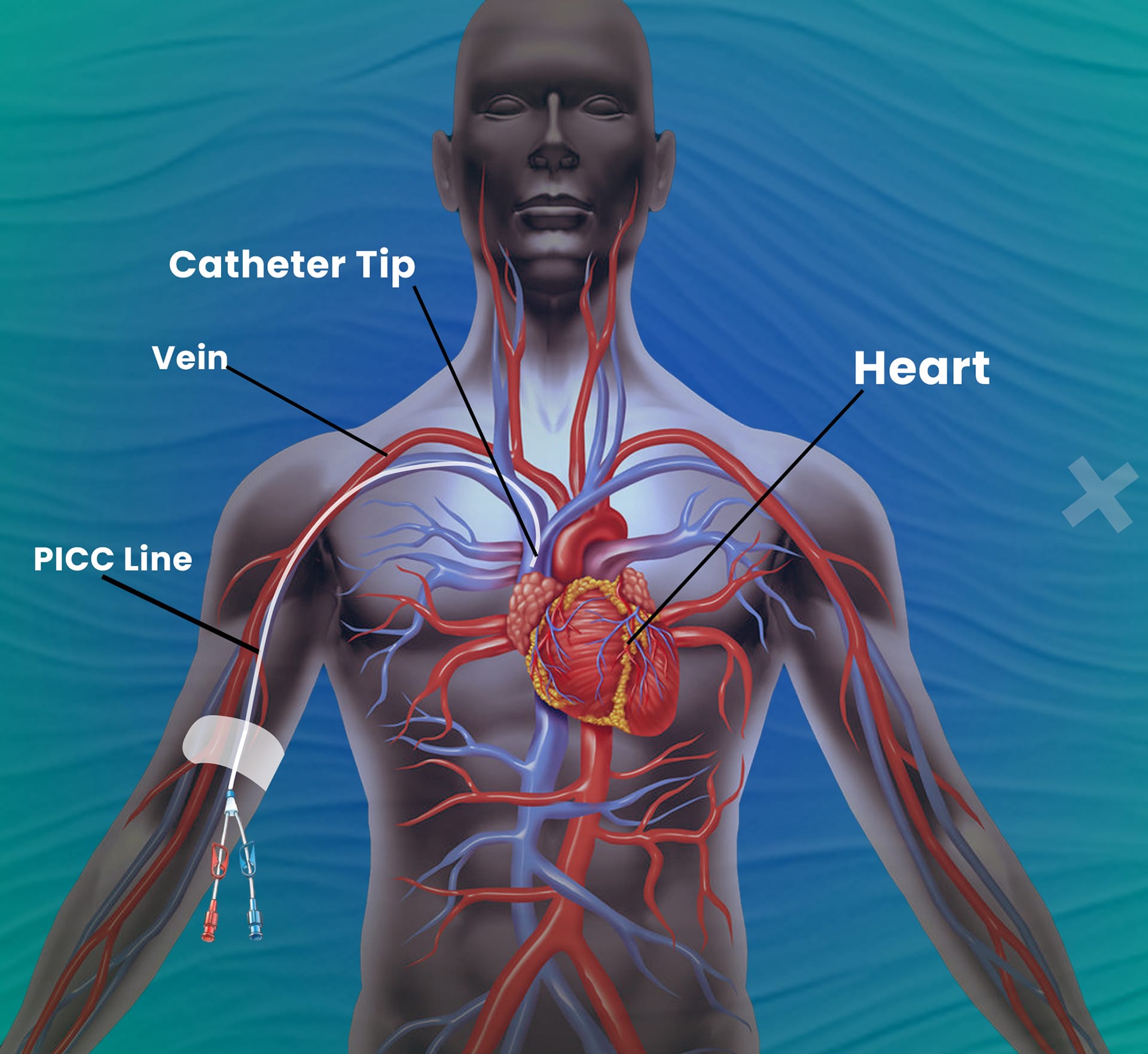
What is a PICC Line?
A PICC (Peripherally Inserted Central Catheter) is a long, thin, flexible tube inserted into a vein in the arm and advanced toward the larger veins near the heart. It offers reliable access to the bloodstream for patients who require long-term intravenous therapies.
Rarely, if veins in the arm are unsuitable, a PICC line may be placed through a vein in the leg.
Why is a PICC Line Necessary?
- A PICC line is commonly recommended for:
- Administration of chemotherapy
- Total Parenteral Nutrition (TPN)
- Long-term intravenous (IV) medications or fluids
- Blood transfusions
- Frequent blood sampling
It allows safe delivery of treatments that might otherwise damage smaller peripheral veins and eliminates the need for repeated needle sticks.
Who Performs the Procedure?
Interventional Radiologists
How the Procedure is Performed
- Vein Selection
Using ultrasound, a suitable vein in the arm (typically the basilic or cephalic vein) is located. - Insertion
A small needle is used to access the vein. The PICC line is then carefully threaded through the vein toward the large central veins near the heart. - Confirmation
The final position of the catheter tip is confirmed through imaging to ensure optimal placement. - Securing and Dressing
The line is secured in place and covered with a sterile dressing. Patients are given instructions for line care at home.
Patient Care & Precautions
Proper maintenance is crucial to prevent complications. Patients should:
- Keep the dressing clean, dry, and secure
- Avoid excessive pulling, bending, or twisting at the insertion site
- Follow flushing protocols to keep the catheter open
- Report any signs of redness, swelling, pain, fever, or catheter malfunction immediately
Benefits of PICC Line Insertion
- Reduced Needle Sticks: No repeated IV insertions
- Protects Smaller Veins: Prevents irritation and damage
- Comfortable for Long-Term Use: Ideal for extended therapies
- Safe and Precise: Ultrasound guidance ensures accurate placement

Possible Risks (Rare)
- Blockage: Can occur with improper flushing or very prolonged use
- Infection: Risk is very low (<1%) with proper care
- Minor bleeding or vein irritation (rare and usually temporary)